
JIAOTONG UNIVERSITY 96 Supply Chain Management Lecture 8 Value of Information Instructor(s) Prof.Jianjun Gao Department of Automation School of Electronic Information and Electrical Engineering SEIEE AU406
Supply Chain Management Instructor(s) SEIEE AU406 + - Value of Information Prof. Jianjun Gao Department of Automation School of Electronic Information and Electrical Engineering Lecture 8

Introduction Value of using any type of information technology Potential availability of more and more information throughout the supply chain Implications this availability on effective design and management of the integrated supply chain SEIEE AU406
+ - SEIEE AU406 Introduction Value of using any type of information technology Potential availability of more and more information throughout the supply chain Implications this availability on effective design and management of the integrated supply chain
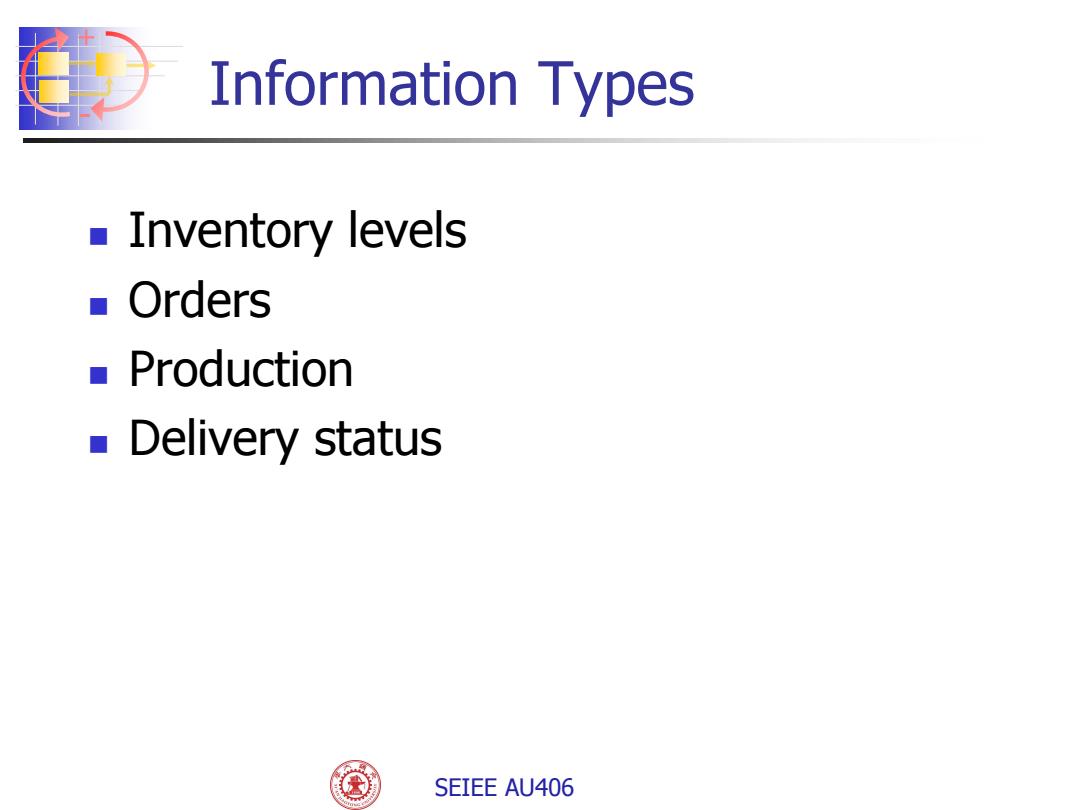
Information Types Inventory levels Orders Production ■Delivery status SEIEE AU406
+ - SEIEE AU406 Information Types Inventory levels Orders Production Delivery status

More Information Helps reduce variability in the supply chain. a Helps suppliers make better forecasts, accounting for promotions and market changes. Enables the coordination of manufacturing and distribution systems and strategies. Enables retailers to better serve their customers by offering tools for locating desired items. Enables retailers to react and adapt to supply problems more rapidly. Enables lead time reductions. SEIEE AU406
+ - SEIEE AU406 More Information Helps reduce variability in the supply chain. Helps suppliers make better forecasts, accounting for promotions and market changes. Enables the coordination of manufacturing and distribution systems and strategies. Enables retailers to better serve their customers by offering tools for locating desired items. Enables retailers to react and adapt to supply problems more rapidly. Enables lead time reductions
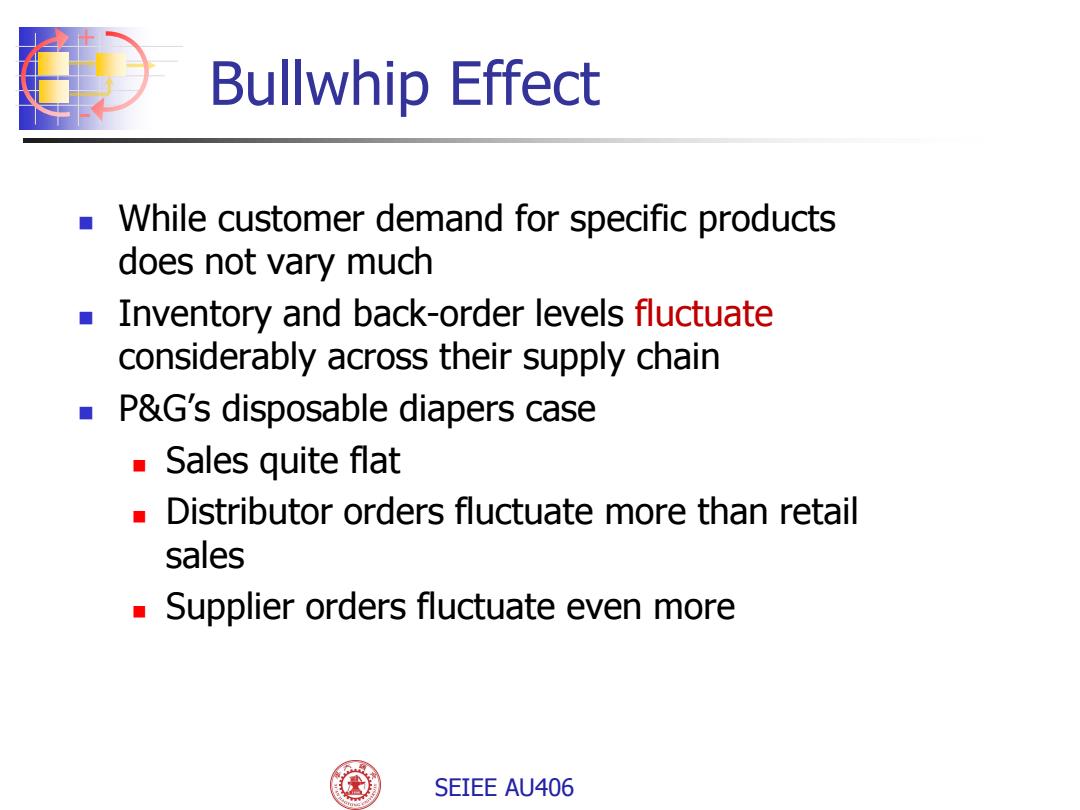
Bullwhip Effect While customer demand for specific products does not vary much Inventory and back-order levels fluctuate considerably across their supply chain P&G's disposable diapers case Sales quite flat Distributor orders fluctuate more than retail sales Supplier orders fluctuate even more SEIEE AU406
+ - SEIEE AU406 Bullwhip Effect While customer demand for specific products does not vary much Inventory and back-order levels fluctuate considerably across their supply chain P&G’s disposable diapers case Sales quite flat Distributor orders fluctuate more than retail sales Supplier orders fluctuate even more
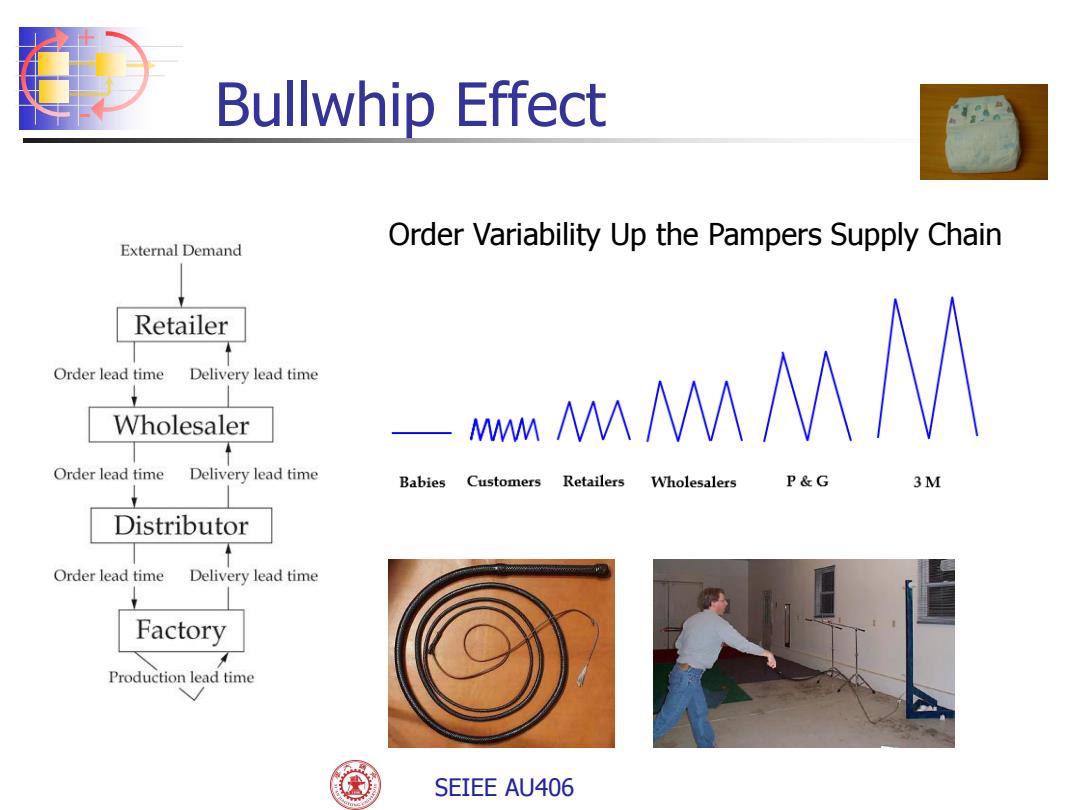
Bullwhip Effect External Demand Order Variability Up the Pampers Supply Chain Retailer Order lead time Delivery lead time Wholesaler 一讯 Order lead time Delivery lead time Babies Customers Retailers Wholesalers P&G 3M Distributor Order lead time Delivery lead time Factory Production lead time SEIEE AU406
SEIEE AU406 + - Bullwhip Effect Order Variability Up the Pampers Supply Chain
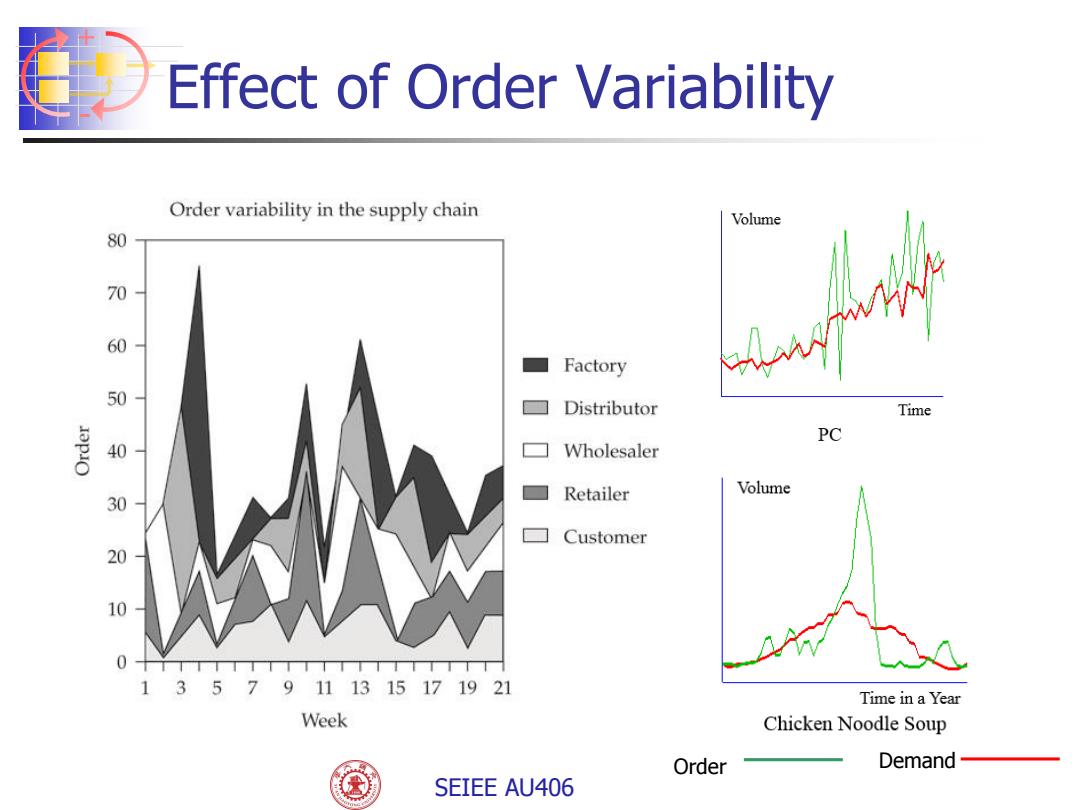
Effect of Order Variability Order variability in the supply chain Volume 80 70 60 Factory 50 □ Distributor Time PC 40 口 Wholesaler Retailer Volume 30 Customer 20 10 13579111315171921 Time in a Year Week Chicken Noodle Soup Order Demand SEIEE AU406
SEIEE AU406 + - Effect of Order Variability Order Demand
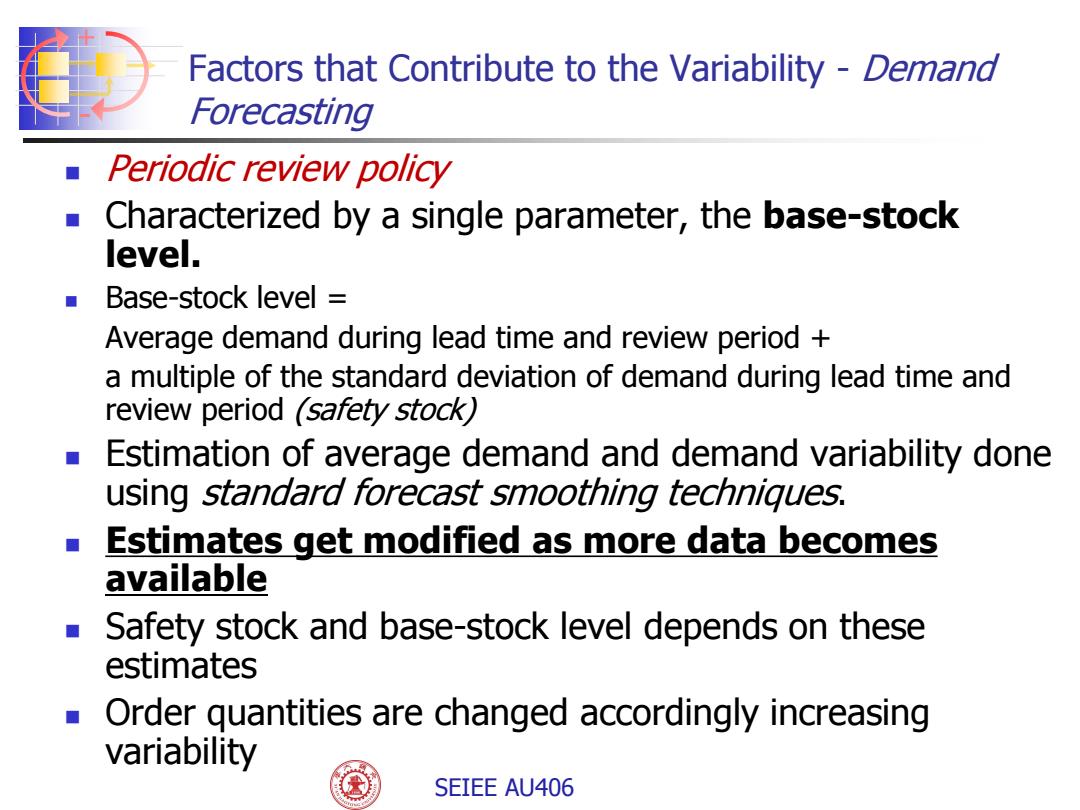
Factors that Contribute to the variability-Demano Forecasting Periodic review policy Characterized by a single parameter,the base-stock level. Base-stock level Average demand during lead time and review period a multiple of the standard deviation of demand during lead time and review period (safety stock) Estimation of average demand and demand variability done using standard forecast smoothing techniques. Estimates get modified as more data becomes available Safety stock and base-stock level depends on these estimates Order quantities are changed accordingly increasing variability SEIEE AU406
+ - SEIEE AU406 Factors that Contribute to the Variability - Demand Forecasting Periodic review policy Characterized by a single parameter, the base-stock level. Base-stock level = Average demand during lead time and review period + a multiple of the standard deviation of demand during lead time and review period (safety stock) Estimation of average demand and demand variability done using standard forecast smoothing techniques. Estimates get modified as more data becomes available Safety stock and base-stock level depends on these estimates Order quantities are changed accordingly increasing variability
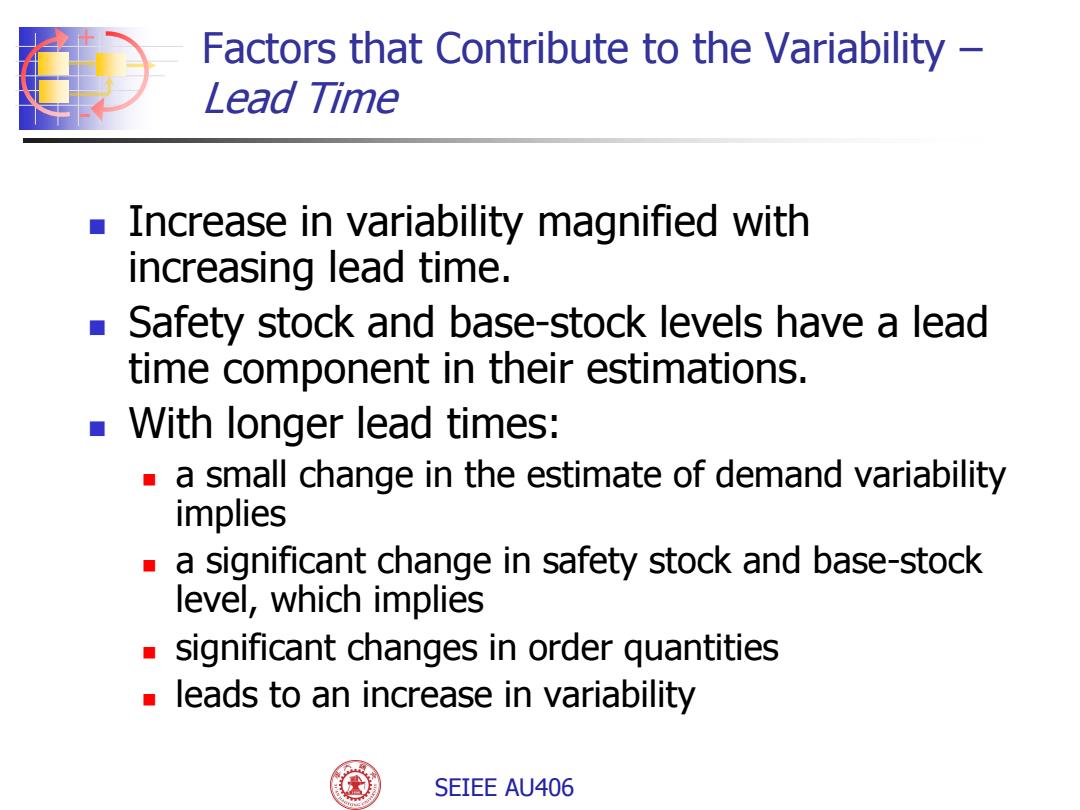
Factors that Contribute to the variability- Lead Time Increase in variability magnified with increasing lead time. Safety stock and base-stock levels have a lead time component in their estimations. With longer lead times: a small change in the estimate of demand variability implies a significant change in safety stock and base-stock level,which implies significant changes in order quantities leads to an increase in variability SEIEE AU406
+ - SEIEE AU406 Increase in variability magnified with increasing lead time. Safety stock and base-stock levels have a lead time component in their estimations. With longer lead times: a small change in the estimate of demand variability implies a significant change in safety stock and base-stock level, which implies significant changes in order quantities leads to an increase in variability Factors that Contribute to the Variability – Lead Time
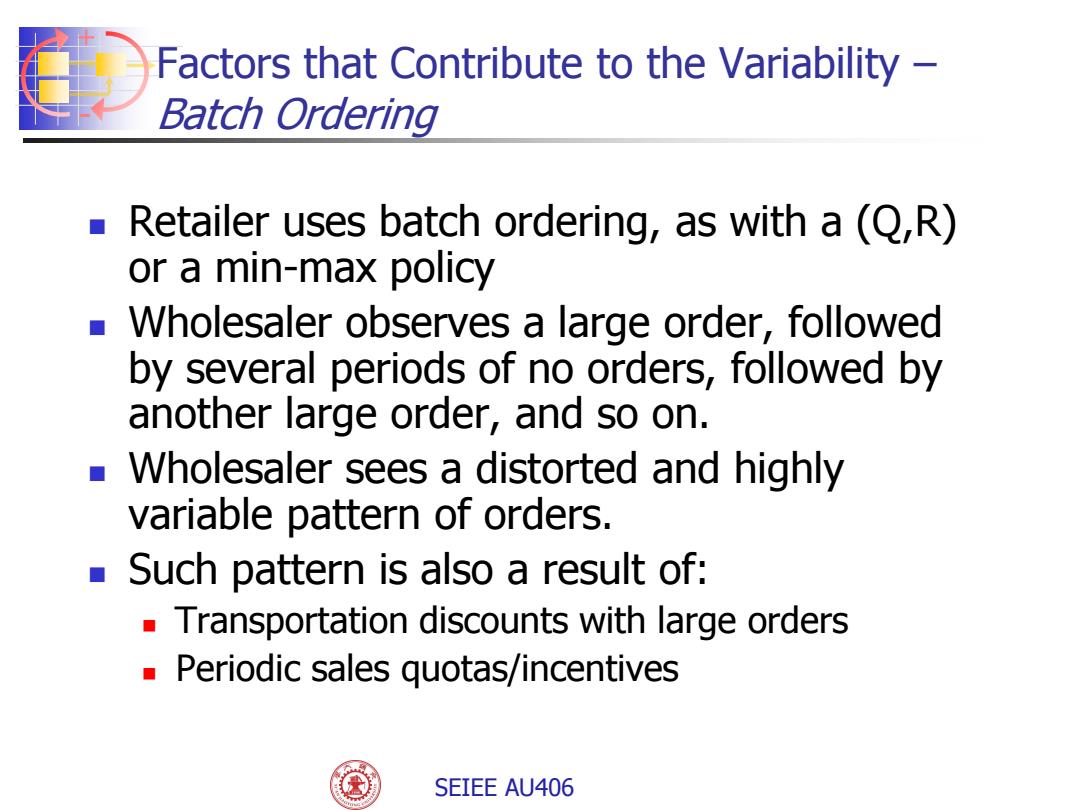
Factors that Contribute to the variability- Batch Ordering Retailer uses batch ordering,as with a(Q,R) or a min-max policy Wholesaler observes a large order,followed by several periods of no orders,followed by another large order,and so on. ■ Wholesaler sees a distorted and highly variable pattern of orders. Such pattern is also a result of: Transportation discounts with large orders Periodic sales quotas/incentives SEIEE AU406
+ - SEIEE AU406 Factors that Contribute to the Variability – Batch Ordering Retailer uses batch ordering, as with a (Q,R) or a min-max policy Wholesaler observes a large order, followed by several periods of no orders, followed by another large order, and so on. Wholesaler sees a distorted and highly variable pattern of orders. Such pattern is also a result of: Transportation discounts with large orders Periodic sales quotas/incentives